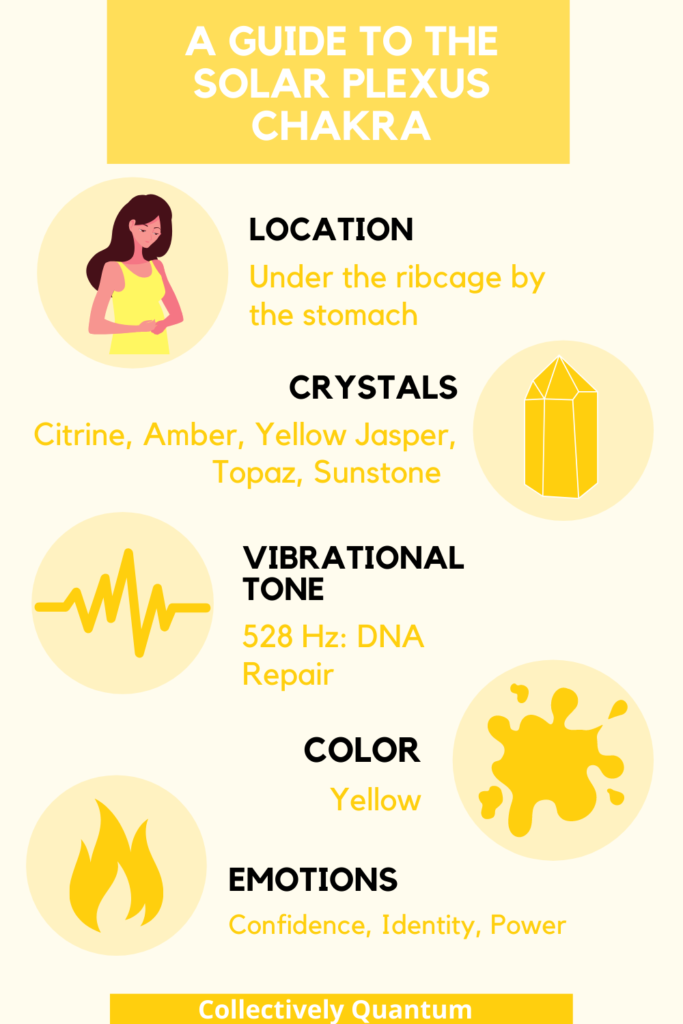
Your Chakras serve as storage centers for the energy that flows through your body. You have seven major chakras that run the length of your spine, but minor chakras are located all over your body. Each of these storage centers correlates to a specific organ/gland combo, beginning at the base of the spine and ending at the crown of your head. Traditionally, the main chakras are numbered one through seven, beginning with the root chakra.
The energetic frequencies of these centers have been studied, and through a mixture of ancient wisdom and practical experience we have arrived at an understanding of how each chakra influences our energetic selves.
Although healers and mystics have recognized the chakras for thousands of years, they are just now beginning to make their way into modern medicine. If you are skeptical, check out this article.
Because of the abundant information available about each energy center, this post just skims the surface. It is written as a comprehensive guide, something that serves as a baseline for your knowledge, so that you can grow and develop from a strong foundation.
Solar Plexus Chakra
The Sanskrit word for the solar plexus chakra is Manipura. This word stems from mani, which means ‘gem,’ and pura, meaning ‘city.’ The word as a whole is often translated as ‘city of jewels.’ This translation helps us to think of the solar plexus as a treasure box, the source of our personal power and confidence. Located in the upper abdomen, Between the navel and the sternum, the solar plexus functions as the sun of your chakras, governing your sense of well-being and self-worth.
Physical Identity
The solar plexus chakra sits between the ribs in your upper abdomen. Physically, this chakra governs the pancreas, and regulates digestion and the assimilation of muscles. Due to its association with the pancreas, the solar plexus is responsible for blood sugar regulation. In terms of the spine, the middle of your thoracic region corresponds to the third chakra, including vertebrae T5-T9.
Emotional Identity
Emotionally, the solar plexus corresponds to self-esteem, power, and well-being. This chakra is also where you store your sense of who you are and who you are not. Typically, this chakra develops from ages fourteen to twenty-one. Due to this seven-year development period, high school and university are formative years for an individual’s sense of identity.
Just like our physical state, our energetic state can become imbalanced. Because the chakras function as energetic storage centers, any fluctuation in their energies causes them to either release too much energy or too little. The symptoms of these fluctuations appear first on an emotional and mental level. Then, if the imbalance persists, physical symptoms develop.
Emotional Symptoms
Emotional symptoms of an imbalanced solar plexus chakra include:
- Feeling powerless
- Giving your power away
- Difficulty taking action
- Extreme extroversion or introversion
- Feeling rejected
- Lack of motivation
- Low self-esteem
- Distorted self-image
- Narcissism
- Confidence issues
- Hiding inner wounds
- Inability to let go of disagreements
- Replaying past situations over and over again in your head
- Perfectionism
Physical Symptoms
Physical symptoms of an imbalanced chakra include:
- Digestive issues
- Ulcers
- Stomach pain
- Problems with the liver, spleen, kidneys, pancreas, intestines, stomach or gallbladder
- Mental health issues resulting from low self-esteem
- Inability to build muscle mass
- Hypoglycemia
- Weight difficulties
- Diabetes
- Fibromyalgia

Balanced Presentation
If your solar plexus is balanced, you are likely to feel a sense of purpose, power, and motivation. Further signs of a balanced solar plexus include high levels of self-esteem and confidence, healthy digestion, and a strong sense of physical and emotional well-being.
Another strong sign of a balanced solar plexus is the ability to both physically and mentally digest life. The symptoms of imbalance will not be present, and you will likely feel very sunny and bright.
Color and Vibration
Traditionally, the chakras each correspond with a color of the rainbow. The solar plexus chakra, as the third chakra, is usually associated with the color yellow. However, clinical manifestations of this chakra can vary widely in color depending on the person in question and their experiences.
Vibrationally, this chakra corresponds with MI on the Solfeggio scale, registering at 528 Hz. This is also the vibrational tone of the sun and has been shown to transform and repair DNA.
On the traditional musical scale, this chakra corresponds with Mi and the note E.
Affirmation and Aura Connection
The solar plexus chakra corresponds with a person’s personal power and self-will. Its inherent right is to ‘act,’ and the common verbal expression is ‘I know who I am and who I am not.’
The solar plexus chakra’s affirmation may look something like the following:
I can do anything I set my mind to. I am positively empowered and successful in all of my endeavors.
In connection with the Aura, this chakra corresponds to the Mental Body. According to Neo-theosophy, the mental body is composed of our thoughts, and so is responsible for forming, expressing, and processing the thoughts and mental state of a person.
Balancing the Solar Plexus Chakra
Activities that balance the solar plexus help you to feel empowered, motivated, and emotionally fulfilled. Because of this, some of the most well-known activities to balance the solar plexus include:
- Spending time outside (bonus points for sun exposure)
- Try something new
- Engage in activities that you find enjoyable
- Wear the color yellow
- Use corresponding crystals, such as citrine, amber, yellow jasper, topaz, and sunstone
- Listen to 528 Hz, the solar plexus vibration. For a good resource, check out this Youtube video
Conclusion
The chakras serve as energy reservoirs in the body, and, just like aspects of our physical anatomy, they also impact our health and wellness. Because of this, understanding the energetic influence the chakras have on your mental state and physical body leads to a better grasp of true health. Finding ways to balance your chakras, including your solar plexus, will create shifts in your overall wellbeing.
If you have been feeling unmotivated, self-conscious, or powerless, you most likely have an imbalance in your solar plexus energies.
If any of the symptoms resonated with you, it may be time to check in on the health and wellbeing of your third energy center. Take time to reflect on how your solar plexus is functioning, feeling, and impacting you.
How can you increase your confidence, find motivation, and develop a sense of purpose? Answering these questions will help you to strengthen and balance your solar plexus.
Tell me: Did this article resonate with you? How is your solar plexus feeling?



